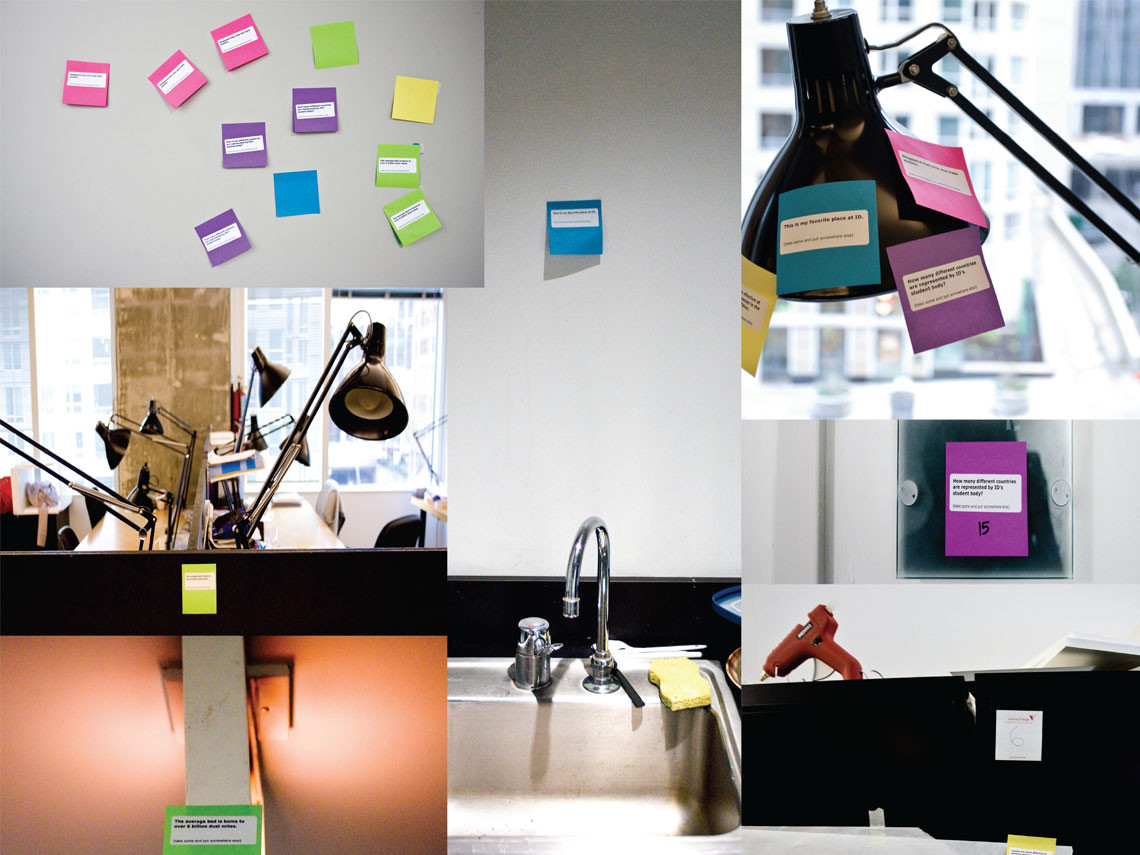
Assignment
The Interactive Media Workshop enables students to explore ubiquitous computing through both theoretical and constructive perspectives. Exploratory and evaluative methods will be used to prototype interactive interfaces; while emerging technologies and media will be used for the design of different levels of conceptual and developmental prototypes. This is a hands-on interaction design workshop. Students will work on numerous hardware and sketch prototypes through the semester (so expect lots of coding and hardware prototyping).
At the end of the workshop, students are expected to come up with publication quality designs which examine the extension of physical architecture/physical artifacts as elements of connectivity that help users to mediate between the information world and everyday life.
The fall 2009 iteration of IMW is a plug in module for the Chicago Leaning Network (CLN) initiative at ID. Projects focus on using the city as a learning environment, specifically in the effects of pervasive/ubiquitous computing as it gets transposed on the fabric of the city as well as it’s effects on existing modules such as the Digital Youth Network, the Electronic Leaning Records, and ThinkeringSpace. Outcomes of the workshop will be used as prototypical cases for the extension of the CLN initiative at ID.
Synopsis
An augmented-reality application for sharing place-based information with your local community.
Problem
We set out to find:
1. How are people currently learning in the city?
2. How is information placed on a metropolis?
3. How do people use that information? We found that the best information isn’t available on a park map or visitor guide.
“Did you know that the new bridge that connects Millennium Park and the Art Institute’s new modern wing is designed to melt snow during the winter?”
Proposed User Experience
Stickis are like virtual sticky notes for sharing information with your local community. They can contain text, images or video, and are attached virtually to physical locations using GPS coordinates. You can view and collection other people’s Stickis as you walk by them with your smartphone, and throughout your day you can automatically pick up other people’s Stickis based on your interests. While you can view the Stickis from anywhere, you can’t pick them up until you’re physically nearby. You can then copy other people’s Stickis to new locations by “re-sticking” them, allowing information to spread geographically and reach more people.
Tags:
Faculty
Students
C. Margaret Venema
Jaesung Park
Jared Allen
Junyoung Yang